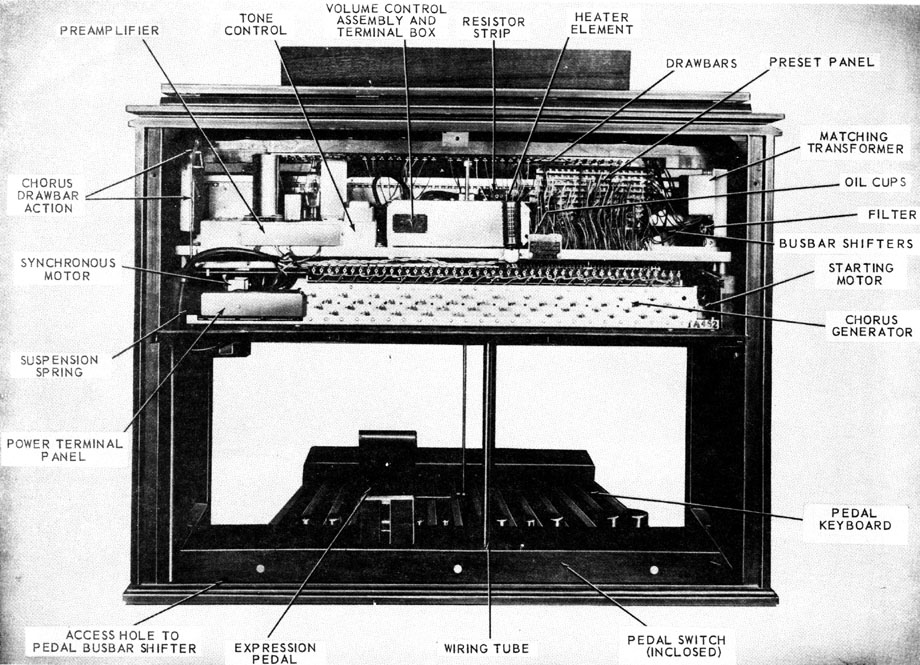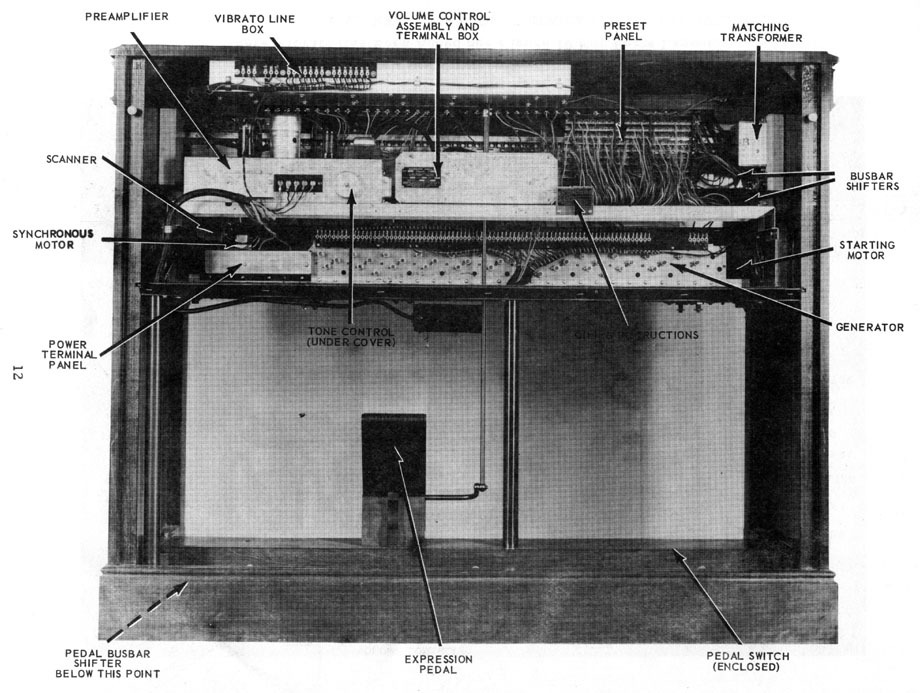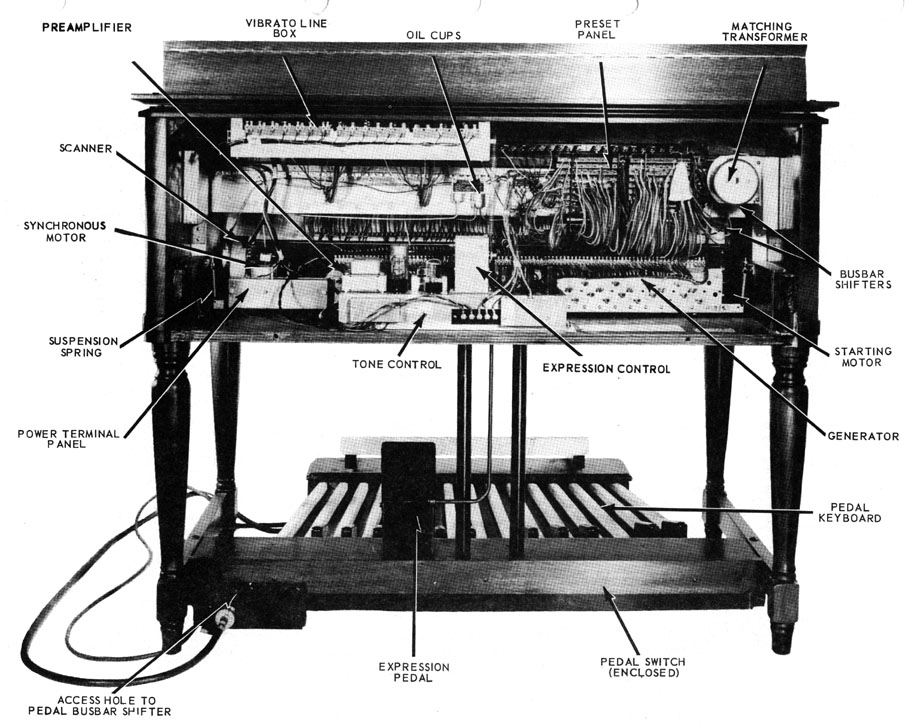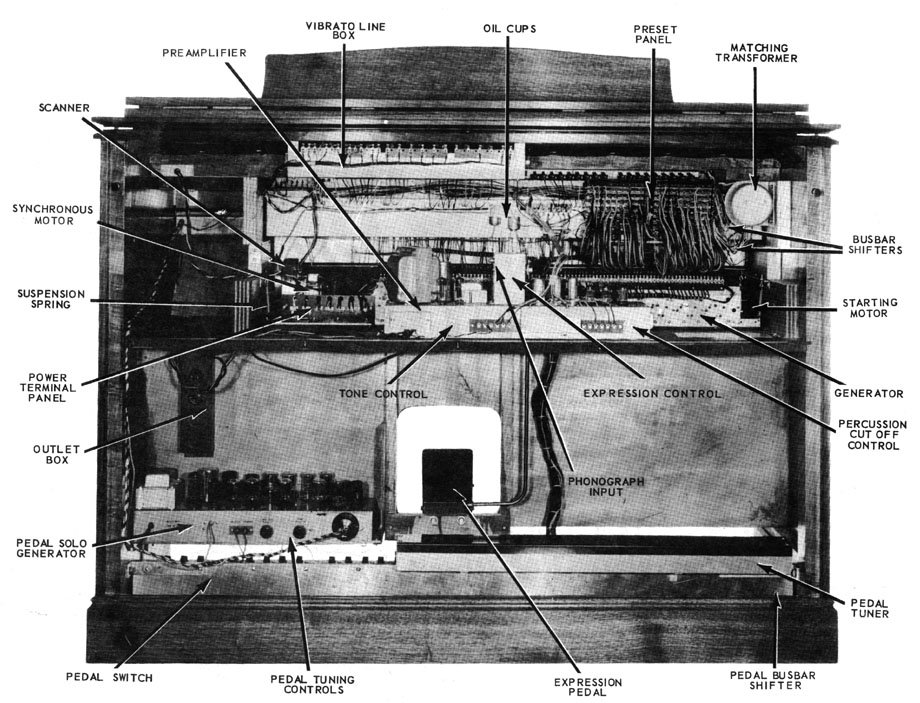




A Hammond organ (or abbr. “Hammond”) is an electromechanical organ named after its inventor Laurens Hammond.
Originally intended as a lower-cost alternative for the pipe organ, the Hammond later became the standard keyboard instrument for jazz, gospel, rock, R&B, Soul, Fusion and so on.
In the 1960s and 1970s was a very popular time for Hammond as almost no mainstream band was playing without an organ. Even today, the distinctive sound of the Hammond organs or reproductions of this sound is still widely used in pop productions. In the course of time, the Hammond organ, especially the model B-3 together with a Leslie loudspeaker system, became a classical musical instrument like the Steinway piano or the saxophone.
On this web page, we capture the models from Hammond Chicago from the 1935 to 1979 time frame. Models which are released by Suzuki Japan (now owner of Hammond) are not covered by this web page.
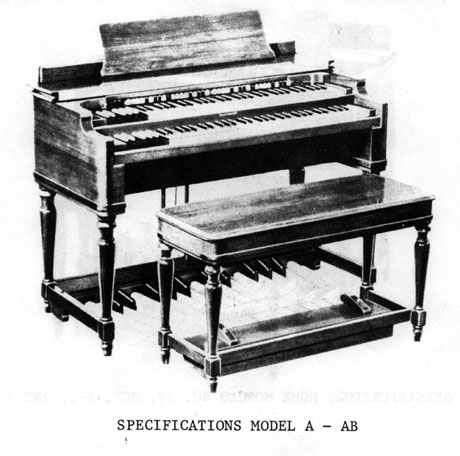
Image: Model A/AB 1935-1938
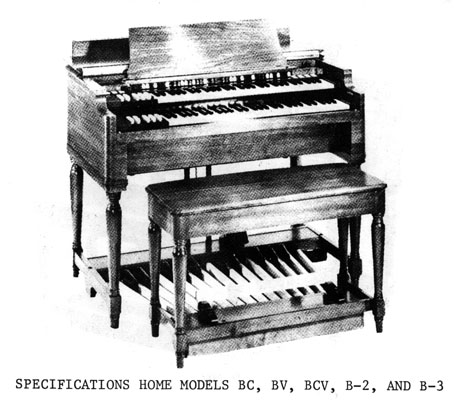
Image: Model BC 1936-1940, BV/BCV 1946-1949, B-2 1949-1954, B-3 1955-1975
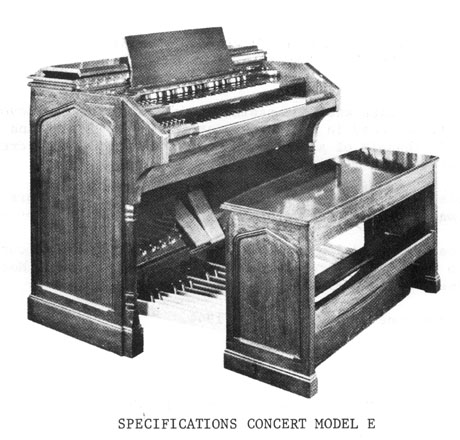
Model: Model E 1937-1942
The core of Hammond’s sound synthesis lies within its mechanical tonewheels which rotate in front of an electromagnetic pickup (a coil with a magnetic iron core). Because this tonewheel has many teeth along its outline, a periodic magnetic field is induced into the pickup system which translates this field into an alternating current. The form of the tonewheel assembles an oscillation very close to a sine wave.
Hammond organs use 91 tonewheels with a different number of teeth. These wheels are all mounted on the same axis and are driven by a transmission gear powered by a synchronous motor. The axis rotates at 20Hz and the lowest tonewheel has 2 teeth. Therefore, the deepest tone is 40Hz. Specific for the Hammond organ is the fact that due to the rigid mechanical connection of the tonewheels, the organ will not detune relatively to its different tones. However, fluctuations in the line frequency directly influence all tones. This means a Hammond organ cannot be tuned and all other instruments have to arrange accordingly.
Since simple sinus waves sound rather boring, every key of the manual can be assigned with variable tones by sliding drawbars. The tones correspond from the 1st unto the 8th harmonic, half of the 1st and half of the 3rd harmonic. The drawbars therefore enable additive synthesis of waveforms from harmonic series to generate the sounds. It is also possible to alter these drawbars while playing. Further ways to change the sound is the addition of a mechanical produced reverb, a vibrato produced by a rotary capacitor and an electronic percussion (only on upper manual).
The sound is further improved by the use of a Leslie, which is a rotating loudspeaker system. This gives the sound a fascinating vibrato and an inimitable surround acoustic during live music.
